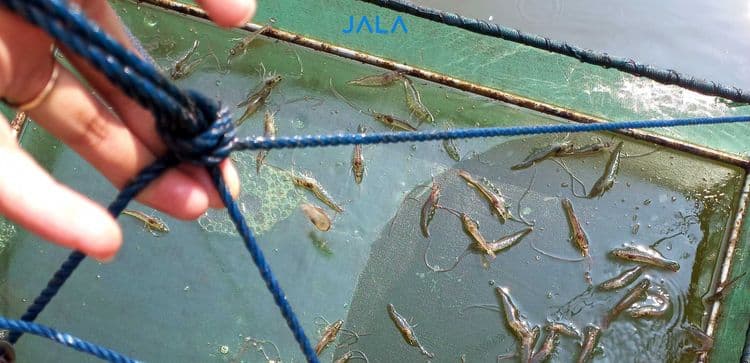
Black gill disease is one of the diseases that can attack vannamei shrimp in the farm, especially farms with poor environmental conditions. This disease can cause respiratory problems in shrimp leading to death, and it has been reported in several countries including Indonesia, Malaysia, and Taiwan.
What are the causes and symptoms of black gill disease in vannamei shrimp, and how to treat it? Check out the full explanation in this article!
Causes of Black Gill Disease in Shrimp
Black gill disease in shrimp is caused by the fungi Fusarium and Aspergillus flavus. Poor water quality with low DO and chemical contamination can increase the likelihood of this disease, especially due to toxic compounds such as nitrite, ammonia, and acids.
Symptoms of Black Gill Disease in Shrimp
Shrimp with black gill disease will experience a change in their gill color. At first, the gill turns more pale or murky, followed by a change in color to brownish yellow.
After that, the gill will turn brown or black with a corroded surface due to the adherence of pathogenic fungi on the gill nodules. Moreover, shrimp will have difficulty in respiring, they will also float, have less appetite, and eventually experience mortality.
How to Mitigate Black Gill Disease in Shrimp
The key to mitigating black gill disease in shrimp is by maintaining the quality of pond water. If water quality deteriorates, replace the water. Additionally, if dissolved oxygen levels drop below 4 ppm, add aeration to ensure oxygen requirements in the pond are met.
Furthermore, when starting a new cultivation cycle, dry the pond bottom for 2 weeks before stocking shrimp fry to eliminate any remaining disease-causing organisms. Water introduced into the pond should also be sterilized and meet the standards for water source quality.
Another crucial step in mitigating black gill disease is to prevent overfeeding so that uneaten feed does not accumulate in the pond and cause the production of toxins. Use feeding trays to monitor shrimp appetite so that the amount of feed given can be adjusted according to shrimp needs.
How to Treat Black Gill Disease in Shrimp
If shrimp are already infected with black gill disease, here are the steps that can be taken to treat it:
- Change 10-30% of the pond water for 3 days in a row.
- Give slaked lime (CaOH)₂ at night with a concentration of 5-10 ppm at night. 3.Give fermented bran and molasses with a ratio of 1:2 per 2 ppm for 3 days in a row until the pond water changes color.
- Give probiotics such as Rhodococcus dan Rhodobacter at a concentration of 0.5-1 ppm in the evening.
Read more: Selecting and Applying the Right Probiotics
Conclusion
Black gill disease in shrimp is caused by the fungi Fusarium and Aspergillus flavus, which may attack shrimp which live in unfavorable farm environment conditions.
To mitigate this, farmers should perform water quality monitoring regularly and ensure that the proper amount of feed is given in order to prevent accumulation of uneaten feed at the bottom of the pond. If the shrimp have caught this disease, replace pond water and give a treatment of slaked lime or (CaOH)₂ in the pond along with fermented bran and probiotics.
To ensure a smooth cultivation which is free from the threat of shrimp diseases, farmers need to regularly record their cultivation data to monitor any changes that occur in their ponds, providing the proper treatments. JALA App is #HeretoHelp farmers as an application to record and analyze farm conditions anytime and anywhere.
Haven’t joined JALA App? Register yourself now through app.jala.tech and download the mobile version on Google Play Store or App Store!





